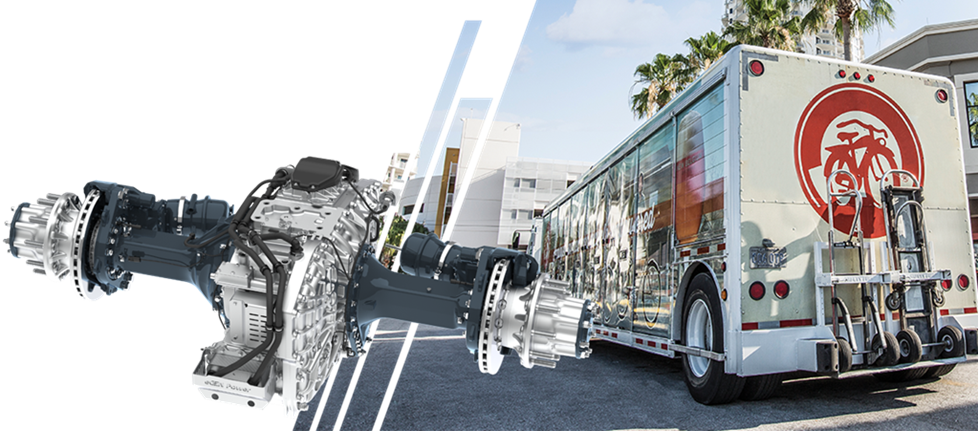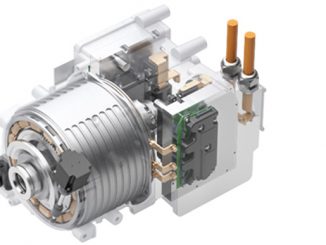By Thomas Schliesch, Head of R&D – Max Baermann GmbH
The manufacturing of permanent magnets has changed a lot during the last three decades as well as demands of the automotive industry. This development can be observed especially in the field of bonded permanent magnets, which I want to talk about in this blog. Whereas in the late 80s and early 90s more or less simple magnets had to be supplied (e.g. for stepper motors or cross-coil instruments) the demands have changed a lot since then. Three decades ago magnets were just bare magnets in nearly all cases. I.e. no other parts had to be combined with the magnets by way of overmolding or multi-component molding. Ring, disk or block magnets of rather simple geometry were the majority of shapes being ordered. In most cases magnetic quality control was restricted to merely one field component on one path around or near the magnet or a Helmholtz coil measurement of total flux. Mechanically only a handful of dimensions had to be measured, usually with relatively generous tolerances around a few 1/10 mm. The approval of physical parameters was often done in a way that a sample set of five magnets being within specification was sufficient to make everyone happy.
It had been a big WOW effect when customers first demanded 3-sigma tolerances together with all the statistical stuff like cpk values at the end of the 80s. Nowadays usually we speak about 5-sigma tolerances in most cases and even 6-sigma tolerances for an increasing number of magnets. My estimate is that the number of parameters on a customer drawing has increased at least by a factor four since then. Beyond that, we are now talking about ± a few 1/100 mm instead of a few 1/10 of mm. Magnetically two or three field components have to be measured instead of one, and this is to be performed at many locations around or on the magnet. For quality control nowadays we have to handle sensors that had been exotic a few decades ago, i.e. multicomponent Hall sensors or magnetoresistive sensors, which measure smallest fields or field angles. As magnets today are commonly made by a combination of different materials, a high variety of stability tests has to be performed. These tests range from mechanically destructive tests via thermal tests up to environmental tests. They start at the prototype phase of a magnet and partially also attend the series production. These increasing demands have mainly originated from the automotive industry. Compared to household appliances industry, automotive customers seem to have made the biggest leap forward in technical innovation during the last decades, accordingly, technical demands as well as quality demands have grown in the same way.
But are the above demands, related specifications (more or less big piles of paper) and related tests always necessary or well devised? Let me allow a few examples that explain why I’m sometimes in doubt:
The field strength of a magnet is not decreasing linearly by distance as many designers from our automotive customers seem to believe. The famous third power law of the magnetic dipole describes the descend with distance a bit more realistic, and for real magnets things become even a bit more challenging. So when having distance tolerances of a sensor location of a few mm in front of a bonded magnet, the field decay may reduce flux densities considerably. These few millimeters of distance tolerance are very common for automotive systems, especially for magnetic sensors. When one complains about this, the following arguments are usually brought forward: “We simply need these high distance variations as there a long tolerance chains in our system which add up.” Listening to this I sometimes get the impression not to be only at the end of the tolerance chain with our magnets but also at the end of the supplier chain. When arguing about such issues, the automotive experts often seem to be split in two groups: One group uses normal or similar distributions together with the law of error propagation to calculate their distance tolerances. Others simply add up worst case tolerances and claim only to have rectangular dimensional distributions. For sure I like the first group more. When asking about the consequences to underrun magnetic tolerances in the applications, things become more complex. Often high safety margins against real system failures seem to be incorporated. Maybe I’m wrong, but why can e.g. the impact of a field that underruns the lower tolerance limit not even be estimated in so many cases? Does an angular magnetic sensor really have a serious error when a specific magnetic field is undershot? Or does a motor really make noise when its commutation signal has a few higher harmonics? Why is it that many customers are so often at a loss to explain such details?
The same problems often arise when environmental and stability tests have to be made: Does a magnet really need to withstand temperature shock tests between -40°C and 150°C when during application the magnet will never be exposed to any temperature shock but only to a relatively soft transition from low to high temperatures? Does it hurt a system which is e.g. made of NdFeB, when the irreversible loss of the magnet over product life time is 5 percent instead of 3 percent only?
I understand the demands of automotive industry only too well, as I know the feeling as a customer when my own car is making trouble. I appreciate the concerns of automotive industry and their suppliers to keep failure rates low, as thousands of single parts have to be assembled within one modern car. Those customers can be handled easily who are willing to scrutinize their demands regarding distance tolerances or environmental tests. And even those who belong to the more reluctant group who insist on their worst case assumptions can be convinced in most cases. In many cases, solutions can be found by improving the magnet so that everybody is happy. Often it takes a lot of additional work, efforts and manpower to achieve a safer and enhanced product or to check for more realistic specifications. And to tell the truth, in the 90s I sometimes thought that magnets were boring due to their simple field configurations and shapes. On the other hand, nowadays I sometimes even wish for these times to come back, times when we talked about 3-sigma tolerances or even less, times when simple geometries and field configurations were common. But this lasts only for a few moments when I realize how exciting work is nowadays, how much demanding times have become intellectually and how satisfying it can be to have solved issues like the ones I explained above.
As mentioned before, most issues can be solved by a close collaboration with the customer. In addition the continuously increasing demands regarding quality and technical innovation can still be fulfilled by improved productivity, an increased grade of technical education and by optimized internal operational sequences. However, one subject has to be taken into account: All these subjects and measures ask for expenditures, and it is getting more and more difficult to realize them under the continuous pressure for lower prices, an issue that we have been confronted with during the last decades, too. But we are willing to continue the improvement of our products and make magnets more innovative and complex and manage also those economical demands. We are looking forward to the challenges of the next decades.
 About the Author
About the Author
Thomas Schliesch graduated in Physics from university of Hamburg in 1988 and joined the Max Baermann GmbH, which is a well known manufacturer of bonded magnets in Germany, in 1989. Since 1993 he is Head of Research & Development at Max Baermann GmbH. A major part of his work he devoted to electromagnetic design and the development of specific methods for bonded permanent magnets. Thomas can be reached at t.schliesch@max-baermann.de.



